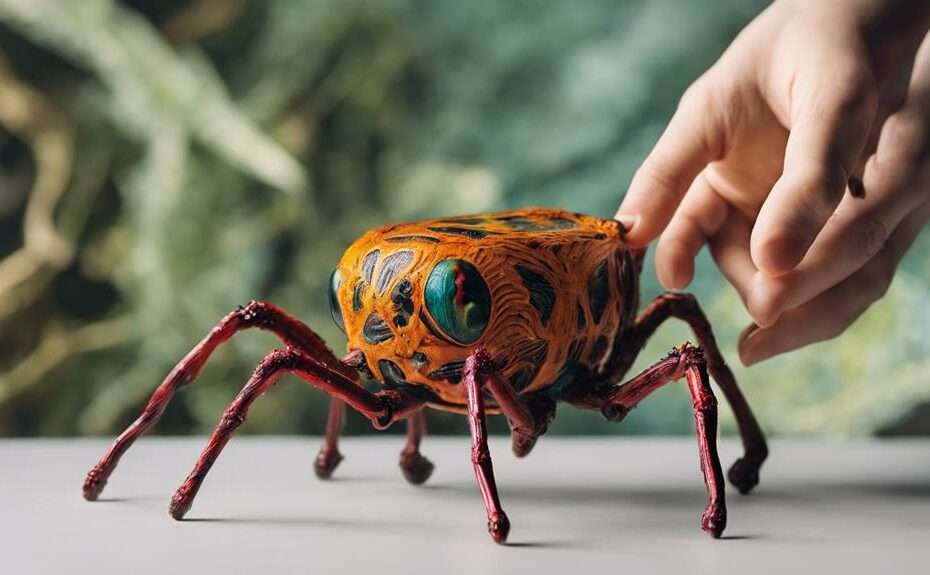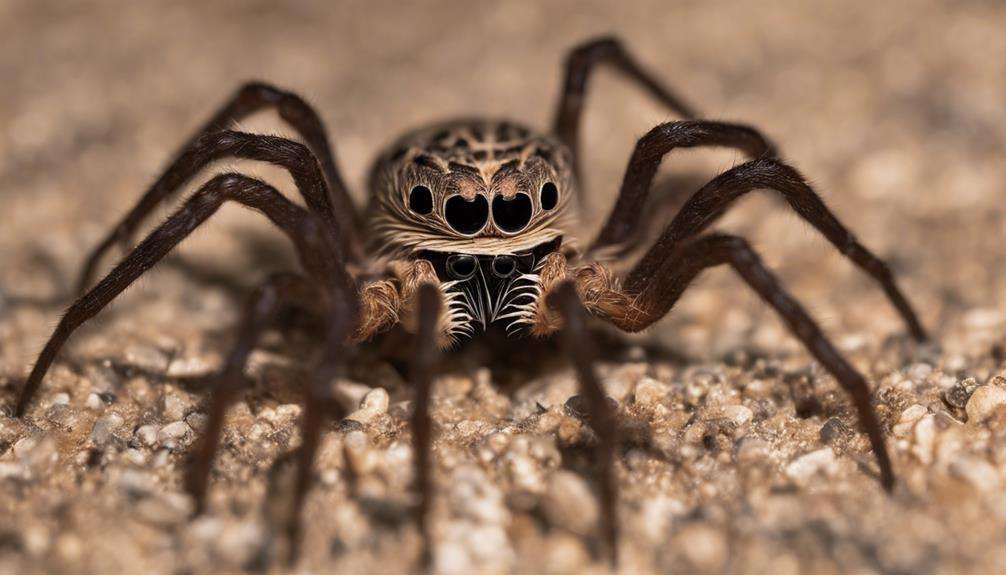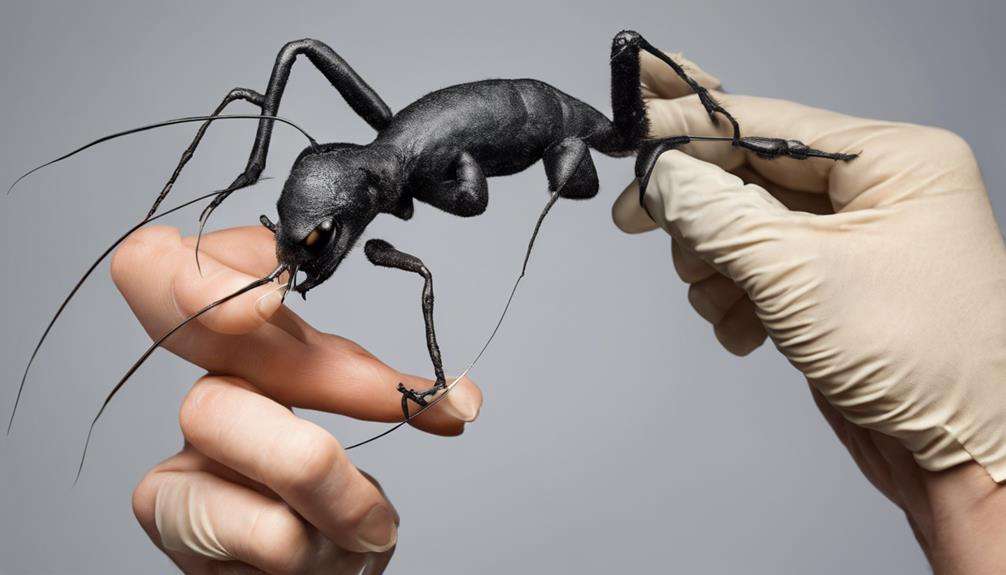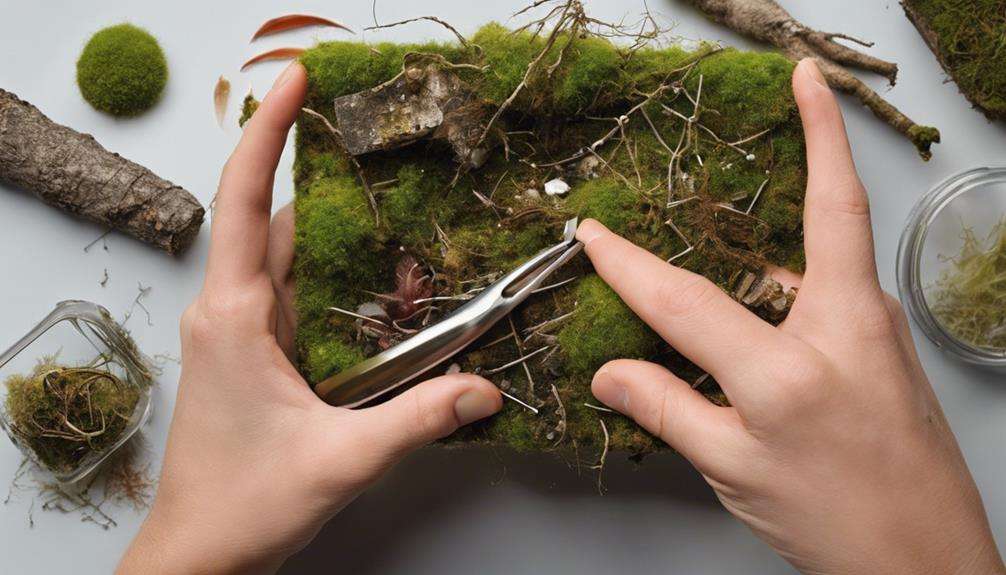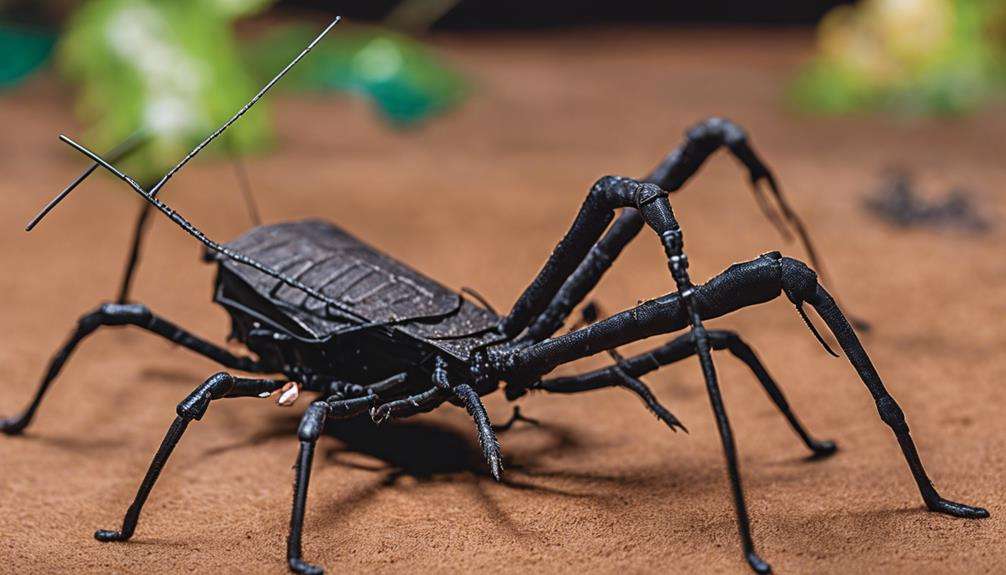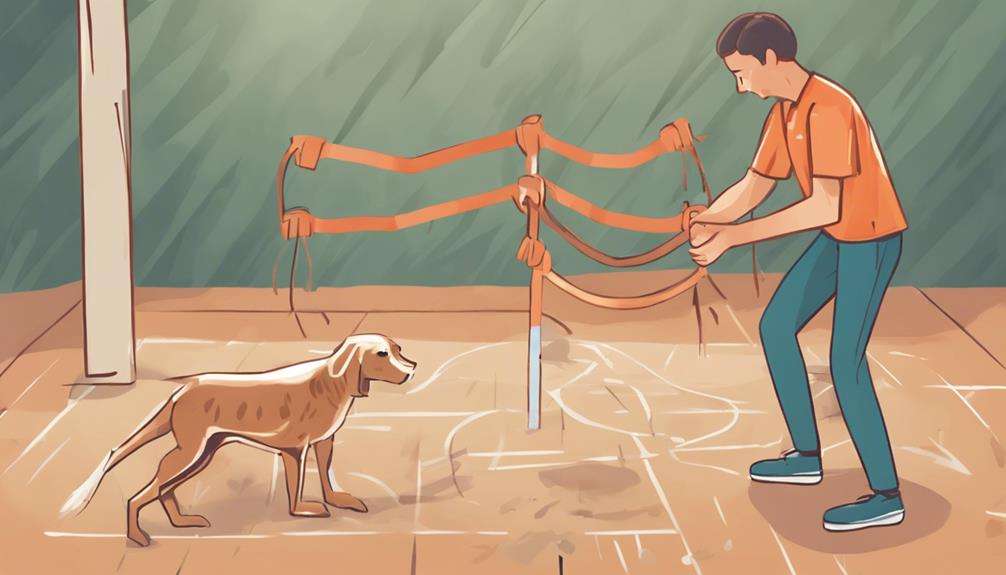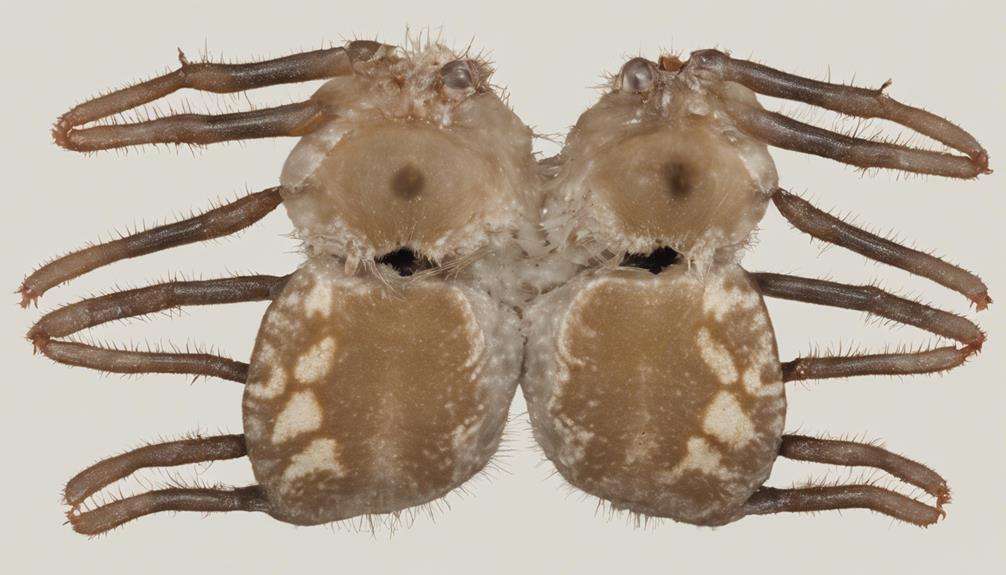Imagine coming home to find your Amblypygid perched gracefully in its terrarium, displaying its unique charm. Curious about how to care for these intriguing creatures?
The beginner's guide unfolds essential care tips, but have you considered the surprising benefits of incorporating enrichment activities into your pet's daily routine?
Let's explore how these activities can enhance your Amblypygid's well-being and spark their natural behaviors.
Key Takeaways
- Mimic natural habitats for optimal well-being.
- Provide varied live prey for nutritional balance.
- Handle with care to avoid stress and injury.
- Understand mating behaviors for successful breeding.
Species Overview
Amblypygid pet species, commonly known as whip spiders, exhibit unique characteristics that make them intriguing additions to the world of arachnid enthusiasts. As pet species, whip spiders like Damon diadema, Euphrynichus amanica, and Heterophrynus batesii are popular choices due to their striking appearance with elongated bodies, slender legs, and distinctive pedipalps. Proper care, habitat setup, and understanding their behavior are essential for keeping these fascinating creatures content.
When caring for whip spiders, it's crucial to provide them with a suitable habitat setup. These arachnids thrive in environments that mimic their natural surroundings. A terrarium with plenty of hiding spots, such as cork bark or artificial plants, is ideal. Maintaining a warm and humid environment is important for their well-being.
Understanding the behavior of whip spiders is also key to ensuring their welfare. These creatures are nocturnal and primarily use their long antenniform legs to navigate and sense their surroundings. They're skilled hunters, using their pedipalps to catch prey. Observing their behavior can provide valuable insights into their needs and preferences.
Habitat Requirements
To create a suitable habitat for whip spiders, it's crucial to replicate warm, humid environments reminiscent of tropical and subtropical regions.
Amblypygids thrive in tight, dark spaces such as under rocks, fallen logs, inside trees, and rock crevices. When setting up their enclosures, ensure to include appropriate substrates like potting soil or coconut fiber to mimic their natural habitat accurately.
Adding springtails or isopods to the enclosure can aid in maintaining cleanliness and preventing mold, which is vital for the well-being of your amblypygid. These small invertebrates also serve as a supplementary food source for your pet.
Feeding and Nutrition
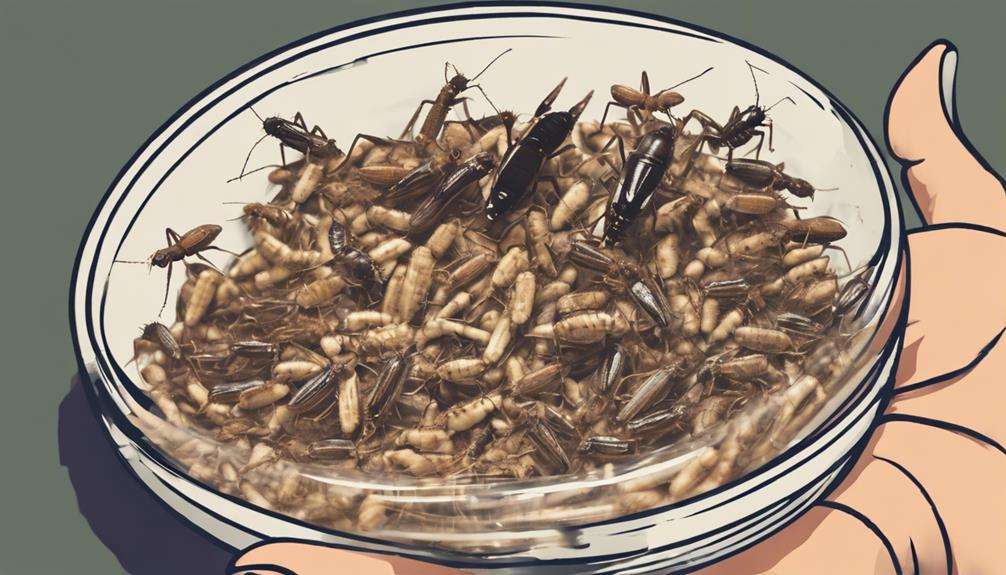
When caring for Amblypygi, it's crucial to understand their carnivorous nature and feeding habits. These creatures thrive on a diet of live prey such as crickets, roaches, locusts, and mealworms.
Providing a varied diet not only ensures nutritional balance but also encourages natural hunting behaviors in Amblypygi.
Feeding Habits Overview
Carnivorous by nature, Amblypygi are nocturnal predators that rely on their antenniform front legs for detecting live prey such as crickets, locusts, mealworms, and roaches. Their feeding habits involve stealthy hunting tactics, making them efficient predators.
It's crucial to avoid feeding them during molting stages to prevent stress and vulnerability. Offering a varied diet is essential to ensure proper nutrition and overall health for Amblypygi. Establishing consistent feeding routines not only helps maintain their well-being but also contributes to their longevity.
Dietary Requirements Guide
In understanding the dietary requirements of Amblypygi, it's essential to provide a varied diet to ensure they receive essential nutrients for their health and growth. Tailless whip scorpions are nocturnal creatures with feeding habits that revolve around hunting grounded prey such as crickets, locusts, mealworms, and roaches.
It's recommended to offer food during the evening hours to align with their natural behavior. During molting stages, avoid feeding as they're vulnerable and may not eat during this period.
A varied diet not only ensures nutritional balance but also stimulates their interest in feeding. Monitoring their feeding behavior and appetite is crucial as it can provide insights into their overall health and well-being.
Nutritional Supplements Tips
To ensure optimal health and prevent deficiencies in your Amblypygi, incorporating nutritional supplements like calcium powder is crucial. Dusting prey with calcium powder before feeding helps prevent metabolic bone disease in these arachnids.
Additionally, gut-loading prey with nutritious foods enhances the nutritional value of their diet. For Amblypygi kept indoors with limited sunlight exposure, vitamin supplements such as D3 can be beneficial.
Using commercially available insect gut-loading products ensures the prey insects provide a balanced diet to your pet. Consulting with a veterinarian or experienced Amblypygi keeper for specific recommendations on nutritional supplements is advisable to tailor the supplementation to your pet's individual needs.
Handling and Interaction
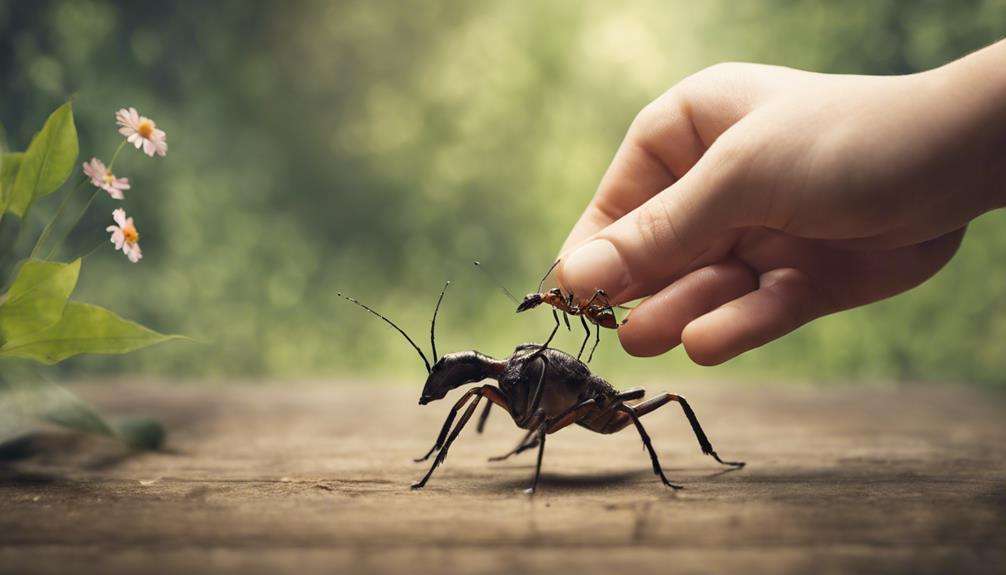
When handling Amblypygids, it's crucial to be gentle and avoid sudden movements to prevent stress. Use a soft paintbrush or gentle touch to guide them, rather than picking them up directly.
Encouraging natural behaviors and allowing them to interact voluntarily can help foster a positive relationship with these intriguing creatures.
Safe Handling Techniques
Approach Amblypygi slowly and gently, using a soft paintbrush or gentle touch to guide them instead of grabbing or restraining them. This method helps prevent startling the Amblypygi, as they can be sensitive to sudden movements.
It's crucial to avoid handling them during molting or feeding times to reduce stress and the risk of injury. Encourage the Amblypygi to voluntarily walk onto your hand for a more comfortable interaction.
Always supervise handling sessions closely and stay prepared to react calmly in case of unexpected movements. By following these safe handling techniques, you can create a positive and secure environment for both yourself and your Amblypygi companion.
Respect Their Space
Respecting the space of Amblypygi is crucial to ensure their well-being and minimize stress during handling and interaction. These delicate creatures should be kept in a calm environment to thrive.
When handling is necessary, use a soft paintbrush or gentle tools to encourage movement without direct contact, reducing the risk of stress and injury. It's essential to avoid touching their fragile legs or pedipalps to prevent harm.
Give them the space they need by observing from a distance, allowing them to feel secure in their surroundings. By respecting their space and handling them with care, you can create a positive interaction that benefits both you and your Amblypygi companion.
Encourage Natural Behaviors
Encouraging natural behaviors in Amblypygi involves providing enrichment activities and limited interactions to support their well-being and minimize stress. To promote natural behaviors, offer climbing structures and hiding spots within their enclosure.
Avoid handling them frequently to reduce stress and allow them to exhibit their typical behaviors undisturbed. Limit interactions to essential care tasks such as feeding and enclosure maintenance to minimize unnecessary stress. Respect their space by observing from a distance to prevent disturbances.
Enhance mental stimulation by encouraging hunting and foraging behaviors through the provision of live prey items. By creating an environment that mimics their natural habitat and promoting activities that align with their instincts, you can help reduce stress and ensure the well-being of your Amblypygi pet.
Breeding and Reproduction
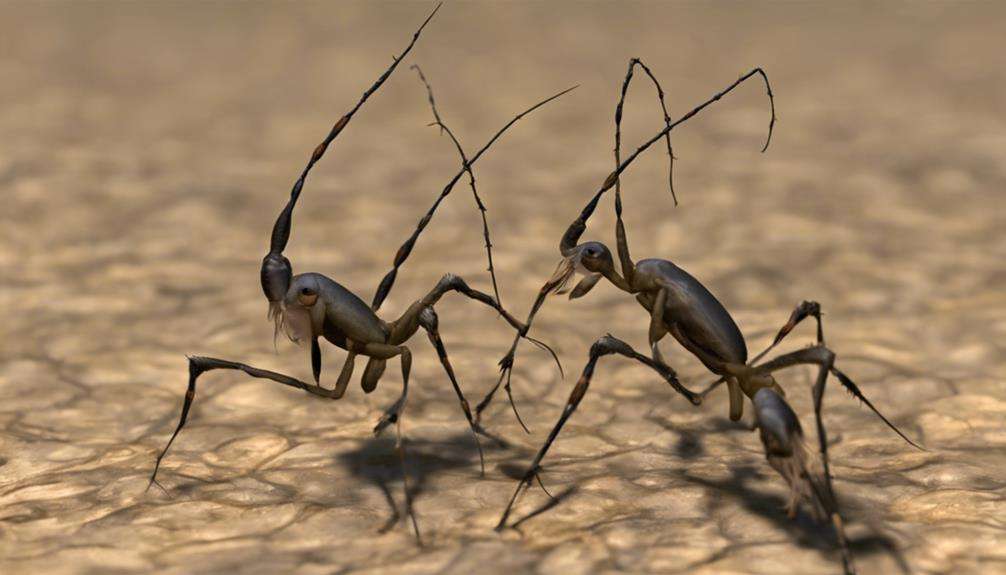
Amblypygi reproduction involves females carrying fertilized eggs in a brood sac under their abdomen. Successful breeding usually occurs post-molt for both male and female Amblypygi. Some species display maternal care, with females providing attention to their offspring.
In the wild, males may engage in combat to establish dominance and secure mating opportunities. Understanding the mating behaviors and reproductive cycles is essential for effective breeding of Amblypygi.
To encourage successful reproduction, ensure that the environment mimics their natural habitat, providing ample space and suitable temperature and humidity levels. Monitoring the development of the eggs in the female's brood sac is crucial, as it allows you to anticipate the birth of the young.
Fun Facts and Trivia
After exploring the fascinating breeding and reproduction behaviors of Amblypygi, it's intriguing to uncover some fun facts and trivia about these ancient arachnids. Whip spiders, such as the Damon Diadema species, have a remarkable history, dating back over 300 million years to the Carboniferous period. Originating from regions like Central Africa, Kenya, and Tanzania, Damon Diadema whip spiders are known for their preference for dark, tight spaces like under rocks, fallen logs, and inside trees.
One captivating aspect of Amblypygi is their ability to undergo color changes during molting. These creatures transition from a dark brown hue to shades of white, blue, or green as a form of camouflage in their natural habitats. Additionally, Damon Diadema whip spiders exhibit intriguing social behavior, with mothers communicating with their offspring using their specialized antenniform front legs. These fun facts shed light on the unique characteristics and behaviors of Amblypygi, making them even more fascinating creatures to study and appreciate.
Frequently Asked Questions
How Do You Take Care of an Amblypygi?
To care for an amblypygi, create a warm, humid habitat with horizontal bark, grounded prey, and vertical surfaces for molting. Maintain high humidity, minimal ventilation, and hiding spots. Monitor behavior for adjustments, and quarantine wild-caught specimens for nematodes.
What Is the Diet of the Amblypygi?
When caring for an amblypygi, ensure their predatory diet includes live prey like crickets and roaches. Their hunting techniques rely on keen senses. Fuel their nutritional needs with a varied diet for optimal health.
Where Are Amblypygi Found?
Amblypygi inhabit various tropical and subtropical regions globally. Their preferred habitats include dense vegetation, caves, and tree hollows. These arachnids are found in Central Africa, Kenya, Tanzania, South America, and Southeast Asia. They exhibit remarkable environmental adaptations.
Is a Whip Scorpion a Spider?
You know, a whip scorpion isn't a spider. With elongated bodies, long legs, and large pedipalps, they differ from spiders in anatomy and behavior. Despite the misconception, they lack venomous stingers and silk production.
Conclusion
Congratulations! You have now embarked on the exciting journey of caring for Amblypygids, those fascinating creatures that thrive in the shadows.
Remember, their mysterious nature is their charm, so embrace the challenge of understanding these elusive predators.
As you navigate their world of hidden wonders, be prepared for surprises at every turn.
Enjoy the irony of how these seemingly delicate creatures can captivate your curiosity while remaining enigmatic in their ways.
Happy exploring!
